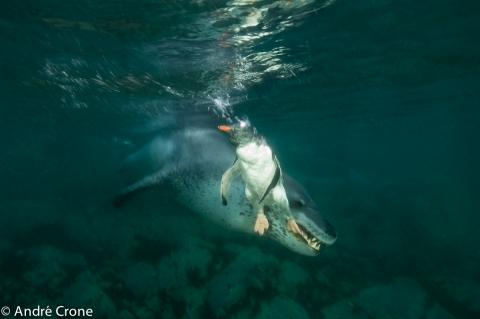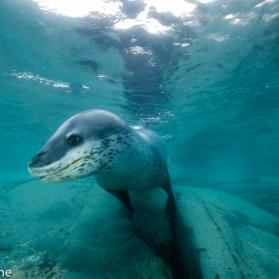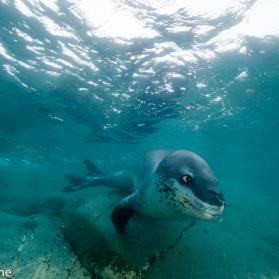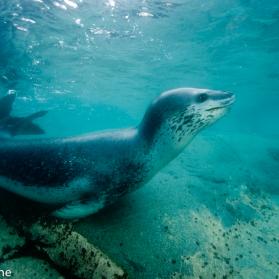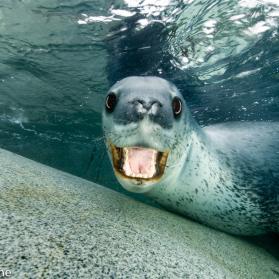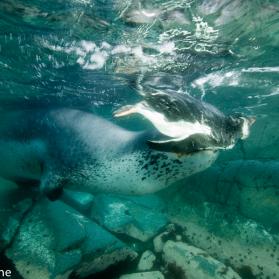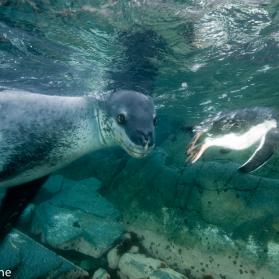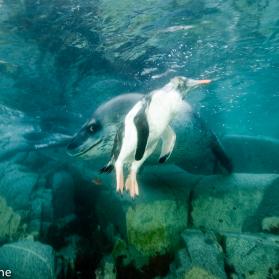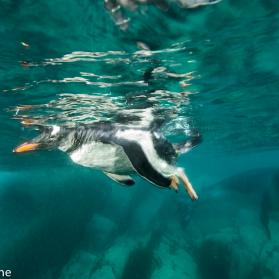Diving with seals is an incredible experience. Several sorts of seals can be found in the Antarctic. While on search for the infamous Leopard seals, we had the pleasure to find some elephant seals and some waddle seals during our trips around the ice. The highly sought after Leopard seals are considered to be the most ferocious seals in the Antarctic. Adult male leopard seals can reach a length of about 3 meters and can weigh up to 300 kilograms. Females are a bit larger. They can be found around the packed ice in summer. In winter they tend to stay in the northerly areas of the Antarctic.
Upon looking at the animal you start fearing them. Leopard Seals have a muscular, almost reptilian head. They have a strong neck and a big mouth with large and sharp teeth. Their throats are almost white with black spots and, in fact, these spots have given the seal its name. The body of the Leopard seal is dark gray above and light grey below. The bodies of the Leopard seals are very well adapted to life in the sea. Their body is extremely well streamlined. With their strong flippers they can reach a speed up to 35 km per hour, a bit faster than the fastest penguin.
Their teeth are impressive; large and obviously very suitable for cutting and tearing the flesh of its prey. Leopard seals mainly eat penguins. You can find Leopard Seals waiting on a piece of ice or on a rock for their prey to enter the water. These seals are swift; killing in an instant. When no penguins are available, Leopard seals are found hunting fish, squid, krill and sometimes other seals. There are many “horror” stories about Leopard Seals attacking humans and a few cases have been documented, yet, most of the stories should be, just that, classified as “horror.”

